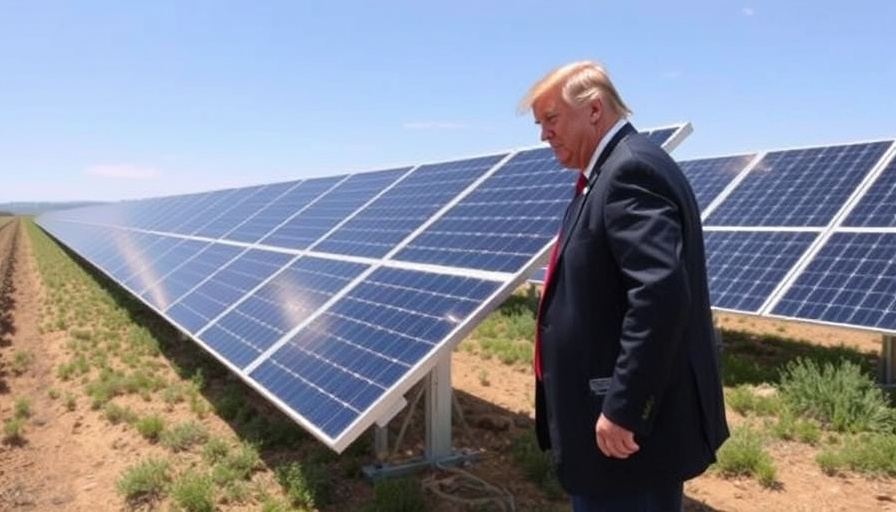
Changing the Course of Renewable Energy
The recent cancellation of the Esmeralda 7 solar project in Nevada, announced by the Trump administration, sends ripples of concern throughout the renewable energy sector. With a potential capacity to power nearly 2 million homes, the cancellation not only signifies the loss of one of the largest solar initiatives in the world but also raises questions about the future direction of clean energy in the United States. The Bureau of Land Management (BLM) has officially labeled the environmental review for this monumental project as "cancelled," marking a significant shift from the initial support this project received during the Biden administration.
Impact on Sustainable Practices
With solar power systems historically seen as a lifeline for combating climate change, the cancellation represents a considerable setback in the U.S.'s transition to a sustainable energy model. The Esmeralda 7 project, which would encompass 185 square miles of land, is considered pivotal for demonstrating how clean energy can be integrated into the national grid without over-reliance on fossil fuels.
As noted by industry insiders, including representatives from NextEra Energy Resources, the commitment to sustainable practices remains strong. However, it is becoming increasingly clear that political shifts strongly impact these projects. The Obama administration had paved the way for numerous renewable energy projects, but since Trump's re-entry, his administration has issued multiple executive orders halting new renewable authorizations on federally owned land.
Economic Implications for Homebuyers and Investors
For homebuyers, sellers, and property investors in communities like Dumfries looking toward the future, such developments underscore the importance of integrating renewable energy into home designs and investments. With the potential for lower utility bills and higher property values tied to sustainable energy innovations, the reluctance to endorse large-scale renewable projects could stifle market growth. Investment in energy-efficient home modifications and eco-friendly materials can not only enhance a property's ecological footprint but also its market appeal.
A Look at Future Trends and Predictions
The landscape of renewable energy is rapidly shifting. As observed by industry analysts, despite these bureaucratic hurdles, projects like Esmeralda 7 reflect a broader trend where solar energy is poised to lead new electric generation capacity. It is projected that solar will contribute approximately 33.3 GW of electric capacity in 2025, underscoring the long-term viability of clean energy sources despite short-term setbacks.
The Path Ahead: Strategies for Sustainable Living
For those in the Dumfries market—where the emphasis on sustainable practices is gaining traction—understanding state policies and federal regulations concerning renewable energy is vital. As sales trends increasingly gravitate toward energy-efficient homes, homeowners can take proactive steps by investing in residential solar solutions and energy-efficient upgrades.
This situation serves as a call to action for all stakeholders, from local governments to individual homeowners: adaptation and innovation are crucial. Even as we witness pushbacks against renewable projects on the federal level, communities can play a pivotal role in supporting local green initiatives that align with sustainability goals.
Conclusion: A Shared Commitment to Sustainability
The cancellation of the Esmeralda 7 solar project may reflect a significant policy hurdle in the renewable sector, but it shouldn’t deter individual commitments to sustainable practices. With the potential consequences of climate change looming larger, empowering communities to advocate for and participate in renewable energy solutions is essential. Every decision today will influence the market for years to come, shaping living environments into beautiful and sustainable spaces. Homebuyers and investors should seize opportunities to engage with green technology and eco-friendly materials to enhance their properties and contribute to a more sustainable future.
 Add Row
Add Row  Add
Add 





Write A Comment